Wildlife gardening – 2017 update
By Martin Kalaher
Some members may have read my 2016 articles on wildlife gardening and some may have seen my garden for themselves, when I held my first-ever Open Day in July 2017. For everyone else, let me introduce myself as a wildlife-garden enthusiast whose aim is to create a garden that is very insect-friendly. More specifically, I want to encourage butterflies to visit the garden and then stay and breed but what works for butterflies also works for many other insects and in high summer the garden is full of bumble bees, honey bees, hoverflies, moths and many others that I have yet to name.
Cherry House is situated on the southern outskirts of Storrington, with Chantry Hill just one-kilometre due south and Kithurst Hill approximately three kilometres, south-west. There is a mature, deciduous hedge on the southern and eastern boundaries and a variety of evergreen shrubs and trees on the western boundary. We also have a wildflower meadow, a small pond and two large herbaceous borders, which are full of British Native plants. Close to the house there are two small herbaceous beds that contain a variety of shrubs and flowers which include good-size clumps of Buddleia and Michaelmas Daisies. The pond was dug in 2004, the wildflower meadow 2005-2008 and the herbaceous borders gradually extended over the past few years. This brief description sets the scene.
Every autumn I like to reflect on the gardening summer that has just ended, trying to decide what has worked-out well and what hasn’t. Have there been any learning points that I could put to good use in the future and if so would others find them of interest? I will endeavour not to repeat the contents of last year’s articles, concentrating on this year’s highlights and exploring some of the things I have learned.
Butterfly species recorded in 2017
In my 2016 garden summary I mused that the 28 butterfly-species recorded might never be surpassed. I should have been more upbeat for this year’s butterfly season was the best-ever with a total of 30 species and daily butterfly counts in late July of 100+. Of the 30 species recorded I have good reason to believe that around 26 species bred or attempted to breed.
The species seen this year with daily minima, in brackets, as follows: Small Skipper (10+), Essex Skipper (10+), Large Skipper (10+), Dingy Skipper (1), Clouded Yellow (1), Brimstone (5+), Large White (6+), Small White (6+), Green-veined White (3), Orange-tip (6), Green Hairstreak (1f), Brown Hairstreak (1m), Purple Hairstreak (1f), Small Copper (3), Brown Argus (5), Common Blue (19), Holly Blue (5), Red Admiral (6+), Painted Lady (2-3), Small Tortoiseshell (3), Peacock (9+), Comma (3+), Dark Green Fritillary (1), Silver-washed Fritillary (1), Speckled Wood (2+), Marbled White (10), Gatekeeper (40), Meadow Brown (30), Ringlet (3) and Small Heath (2+).
Both Dingy Skipper and Purple Hairstreak were new records for the garden and the cumulative total now stands at 34 butterfly species.
An overview of the 2017 butterfly season
Overall, I thought 2017 was a very good season for garden butterflies. The weather was reasonably kind for most of the year and although some of August was damp and dismal this was balanced by a mild autumn, which extended the butterfly season right across October and even into early November.
April was very mild which brought forward emergence dates by around 2-3 weeks. When both Meadow Brown and Large Skipper put in a brief appearance on June 1st the season’s total increased to 20 species, when a more usual figure would be around a dozen (2008-2016, the range was 11-13 species). What a contrast to 2016, when following a cold spring emergence dates were 2-3 weeks behind the average. I apologise for stating the obvious but in consecutive seasons the peak activity for many of our Sussex butterfly species was about one month apart!
It wasn’t just spring/early summer butterflies that were affected by an unseasonably warm April. On an inauspicious cloudy, windy July 15th a male Brown Hairstreak landed right beside me and began nectaring on Hemp Agrimony. This date was 21 days earlier than the previous earliest-date record for the garden.
I haven’t been recording garden butterflies for long enough to fully appreciate these things, but my impression was that the autumn of 2017 was rather special. I recorded 17 different butterfly species in September, 10 species in October and even a few in early November.
Most of the butterflies that breed in the garden appeared to have a very reasonable/good year. Also, as a general observation, the three “Whites” were more abundant than usual and Red Admiral had a spectacular autumn. Those were the positives but on the negative side I recorded very few Small Tortoiseshells and there weren’t many Small Heaths this year.
Wildflower meadow, herbaceous borders and background foliage.
In the 2016 articles I divided the garden into three parts to highlight the various plants and butterflies that might be found there. Although this is all completely artificial I think it helps in terms of planning a wildlife garden. If one starts with a clean slate and your brand-new garden is seeded with grass and has a fence all the way round what could be changed to help our native wildlife, and since this is a butterfly website, which plants might encourage butterflies to visit and breed?
Background foliage
The background foliage at Cherry House consists of a variety of British tree species and evergreen shrubbery. The only significant change in 2017 was the addition of six hops, which I planted at the back of the two herbaceous borders, a part of the garden which it is very sheltered from the prevailing winds and is sun-exposed until mid-afternoon. My motive was, of course, to encourage Comma butterflies to visit and breed. I do see this species in the garden but never very many, so I thought it was high time I gave them a helping hand.
A little background reading informed me that hops prefer rich, damp soil and since I have dry, sandy poor-quality soil that wasn’t a good start. So, I dug large holes, filled them with well-rotted garden compost, left them to settle down for 2-3 weeks and then put in good-quality rhizomes (which I ordered from a specialist Kent nursery). During dry periods I watered them regularly. Thankfully, all the hops grew well and since all six plants showed signs of leaf-damage, typical of Comma caterpillars, I presume they bred successfully?
Over the course of the summer I had about a dozen Commas in pristine condition, which I like to think emerged from the garden? Next year I will scrutinise the leaves more carefully and hopefully locate the caterpillars and photograph them (thank you Vince for the photos you sent me).
As usual, Brimstone laid their eggs on Alder Buckthorn and for the first time I observed a Holly Blue laying eggs on variegated Ivy. I have read that Holly Blue aren’t fussy as to the type of Ivy they choose but it’s nice to witness these things with one’s own eyes. In the garden there is an abundance of Common Ivy, Variegated Ivy and Portuguese Laurel so it’s not surprising we have plenty of Holly Blue every year and on April 10th there were at least four males and one female.
Although this species feeds mostly on honeydew it isn’t unusual to see them nectaring on a variety of popular garden shrubs and this year I spotted a male feeding on Choisya. There was another garden-first for me when I watched a male Holly Blue extracting nutrients from bare soil on April 6th. In late July/early August second-brood Holly Blues (especially the females) are often seen nectaring on both Hemp Agrimony and Purple Loosestrife, so they don’t spend all their time high up in the shrubbery.
If you live in Sussex and you have a couple of Oaks in the garden, then eventually a Purple Hairstreak is bound to come along and say hello. My second Red-letter day for the year was on July 18th when a female Purple Hairstreak flew past me right under my eye-line. I could see the intense purple in the centre of the butterfly with a dark brown surround. It flew up to the Oak, whizzed around the lower branches before disappearing into the heart of the tree.
Every autumn I check the garden Blackthorn for Brown Hairstreak eggs. The previous highest count was 41 eggs in 2016 but this year there were 84 fresh, white eggs and about a dozen of last year’s eggs (they are a dull white/grey with a hole in the middle). I think this species must have had a good year!
Herbaceous Border
At least 25 butterfly species visited and nectared in the herbaceous borders in 2017. These borders play such an important role in attracting butterflies to the garden. Nothing in the natural world stays the same and without regular weeding all herbaceous borders can very quickly be dominated with grass species and undesirable weeds. Over the past 2-3 years this has happened in the border nearest to the pond.
Previously I would simply have done more weeding but because of the preparation I did for last year’s articles I am much happier in letting the wildflower/grass ratio strike a more even balance. By listing the preferred larval food plants for all my garden butterflies, it finally dawned on me just how many of them lay their eggs on a variety of grass species. If we want to encourage breeding then we must be prepared leave them alone, within reason! I was more than happy to grasp this basic tenet of wildlife gardening as it saved me a lot of hard labour! Not that I saved myself that much labour for I decided to extend this border and stock it with Betony, Marjoram and Devil’s bit Scabious, leaving plenty of bare soil to colonise naturally. There is now such an extensive seed bank in the garden that it isn’t long before plenty of interesting seedlings make an appearance, the dominant two of which were Hemp Agrimony and Verbena Bonariensis. The latter proved to be a real eye-opener.
My wife, Mary, planted a few Verbena Bonariensis in the garden twenty-odd years ago. The original plants have long since disappeared but whenever bare soil is made available up pops the odd plant or two. There are always a few in the garden but this year a couple of dozen plants emerged in the new extended border. I haven’t always been a great admirer of this species as in the past I have only seen Large White, Small white and the occasional Small Tortoiseshell nectaring on the tiny flowers.
What an amazing revelation it has been (and how wrong could I be!) for this year I recorded around 25 butterfly species nectaring on Verbena Bonariensis. So many of this autumn’s sightings were courtesy of this non-British species. In our garden it self-seeds very readily but the parent plants do not always survive the winter. Needless to say, I shall do what I can to keep it going.
Otherwise, the herbaceous borders were very much as described last year. I cut back a patch of nettles in early June and was rewarded 10 days later with a rather tatty egg-laying Small Tortoiseshell. In turn this lead to scores of caterpillars but sadly not too many adults. Dames Violet is worth another mention as it is an attractive biennial (occasionally perennial) that not only looks good but plays host to Large white, Small White, Green-veined White and Orange-tip.
It is always gratifying when a relatively uncommon butterfly stops off to feed in the garden. On June 23rd, a male Dark Green Fritillary flew through the garden at great speed but then paused briefly to feed on Greater Knapweed in the herbaceous border. Most years there is an obvious passage of Painted Ladies through the garden and in 2017 there were around a dozen that passed through between May 21st and June 17th. Those that stopped to nectar mostly favoured Dames Violet. Later in the summer there were many Painted Lady in pristine condition, as for example one that nectared on Verbena Bonariensis for seven hours on July 27th, and given its condition I presumed it was a British-born individual.
Wildflower meadow
The garden meadow only measures 17 metres x 14 metres and yet 12-13 butterfly species bred there in 2017. On a personal level there were so many highlights but my diary comments for July 2nd encapsulates so much of the magical quality of a wildflower meadow.
Having just returned from Chantry Hill I spent half an hour or so wandering round the garden. There were butterflies everywhere. In the past 3-4 days, there have been 14 species and today a minimum count of about 85 in total, with gatekeeper yet to appear and remain resident in the garden!
Totals as follows: Small Skipper (10), Essex Skipper (10), Large Skipper (10), Large White (2), Small White (2), Green -veined White (1), Small Copper (1), Red Admiral (2), Small Tortoiseshell (1), Peacock (1), Comma (2), Marbled White (10), Meadow Brown (30) and Ringlet (5).
As always, these are minimum counts as the garden shares its butterflies with the surrounding meadows. I have never seen so many skippers in the garden. There was even a Small Skipper nectaring on Broad-leaved Sweet Pea, which I have never seen before. The counts for Meadow Brown and Marbled White are garden records.
Earlier in the season I saw my first-ever Dingy Skipper on May 10th and once again my diary comments says it all.
A Red-Letter day when I recorded a new species for the garden, a Dingy Skipper! It was nectaring on Common Vetch and at first glance it could have been mistaken for a moth. I went for my camera to see if I could get a photo or two. It continued to fly from flower head to flower head feeding on both Common Vetch and the Nigra species, both of which are abundant in the meadow. I think I can honestly say that of the butterflies seen in my garden this species flies the quickest. At times it flew so rapidly that I found it difficult to follow its flight path. Judging by its behaviour I thought it was probably a female.
The reason I thought this individual was probably a female was that it spent a great deal of time nectaring and at no time did it give the impression that it was defending a territory. The following day on May 11th there was another Dingy Skipper and courtesy of photographs this was clearly much “fresher” and this one did spend a lot of time perched and exhibiting territorial behaviour, so I presumed it was a male. On May 25th there was a third different individual perched on Birdsfoot Trefoil, just 3-4 inches off the ground. I thought it was probably laying eggs, but it was a very brief view and I couldn’t be sure. I didn’t see any more Dingy Skippers after that. As this species likes areas of bare soil I shall have to make sure they have some as it would be lovely to have a regular breeding colony.
Of the 12-13 species that bred in the wildflower meadow I only managed to capture the egg-laying moment for three species; Small Skipper, Green Hairstreak and Small Copper. A male Green Hairstreak on territory is not especially uncommon but this is only the second time I have seen a female laying eggs in the meadow.
Three years ago, I dug some beds in the wildflower meadow to try and establish Marjoram and Betony. Overall that has been a successful experiment with the main problem that dominant grass species such as Yorkshire-fog readily invade these beds and that requires a bit of weeding (and sometimes a bit of neglect as there is only so much weeding I am prepared to do). As there is an area of meadow close to the Scots Pines that is rather non-productive I am by degrees digging it up and replacing it with additional beds in the meadow. The latest bed is much bigger, say 3 metres x 2 metres and that is looking good for next year. It is full of Field Scabious, Devilsbit Scabious, Betony and Marjoram and lots of interesting seedlings.
Breeding Hummingbird hawk-moth?
I know next-to-nothing about moths and one of these years I must rectify this. What I did get to see in 2017 and on a very regular basis was the Hummingbird hawk-moth. We always see a few in the garden every year but in 2017 one or more was seen on 16 dates between July 1st and September 19th. Most of the sightings were of individuals nectaring on Buddleia and Verbena Bonariensis, with occasional sightings on Broad-leaved Sweet Pea and Michaelmas Daisy.
The two principal larval food plants for Hummingbird hawk-moth are Lady’s Bedstraw and Hedge Bedstraw, both of which grow well in the garden (particularly Hedge Bedstraw). Wild Madder is also listed but I am not familiar with this plant species. With 16 date records over an eleven-and-a-half-week period it would be surprising if this moth didn’t breed somewhere in the Storrington area and with several square metres of Hedge Bedstraw, I rather suspect they bred in my garden. I shall try and locate the caterpillars in 2018.
Summary
I will muse once more and wonder if I will ever exceed 30 garden butterfly-species in one season but this year I will be more upbeat and suggest that it is more than possible! Not likely, perhaps, but certainly possible.
So, what were the highlights of the 2017 butterfly season. The prospect of having a breeding colony of Dingy Skipper is right up there as was the sighting of Purple Hairstreak. Around 30 meadow skippers in the wildflower meadow was a delight as was the 10 Marbled Whites that were present on the same day. A fleeting view of a male Dark Green Fritillary was lovely as was a Silver-washed Fritillary that floated-by just a few feet away from where I was standing. The whole of the autumn was glorious with lots of very close views of Painted Lady, Comma, Red Admiral, Peacock, Hummingbird hawk-moths and many, many more – courtesy of Verbena Bonariensis. I shall look after this non-British plant species, in future. Watching and photographing the adult butterflies is one thing but for me what assumes much greater importance is providing them with a place to breed, which is why I am just as keen to locate the eggs and the caterpillars. I made a start this year, but I shall try to do better next year.
As for 2018, I have a couple of ideas but I don’t envisage any major changes. I don’t currently have any native Honeysuckle in the garden and provided I can source what I’m looking for I will probably plant some next to the hops. I would imagine Honeysuckle is attractive to a whole range of insect species but of course I have White Admiral and Hummingbird hawk-moth in mind. I’ve never recorded White Admiral in the garden, but you never know I might get lucky.
Otherwise, lots of tinkering to keep what I have in good order. If anyone tells you wildlife gardening is easy and labour-free, do not believe them! But it is a lot of fun and the rewards can make the effort very worthwhile. As an added bonus it also means that your photographic subjects are very close to hand!
Martin Kalaher
November 2017



-2760016112.jpg)
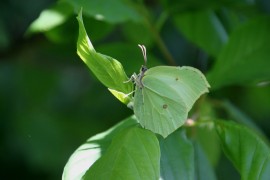
-3823828869.jpg)


-7824988737.jpg)
-7281343713.jpg)
-5307950126.jpg)
-1664212797.jpg)

-1123189940.jpg)
-7643005535.jpg)
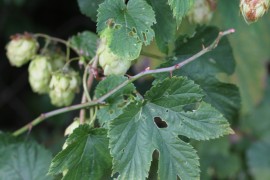
-5552528952.jpg)
-2337167840.jpg)
-6005469830.jpg)
-4999391431.jpg)
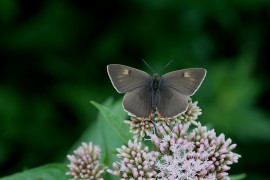
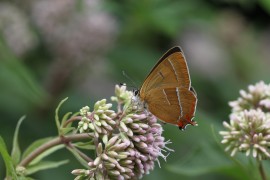
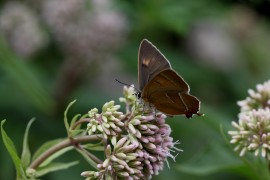
-8538789092.jpg)
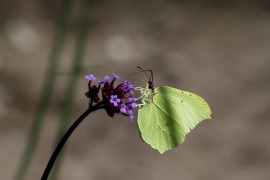
-8873809515.jpg)
-8464758661.jpg)
-665692919.jpg)
-7988045075.jpg)
-8604194619.jpg)
-5159457656.jpg)
-2161575835.jpg)
-9519460964.jpg)
-9311120780.jpg)
-4141471516.jpg)
-673811677.jpg)
-9077616673.jpg)
-4438739633.jpg)
-846422757.jpg)
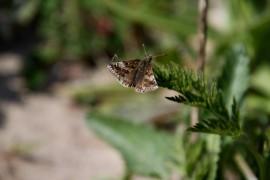
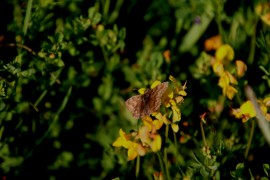
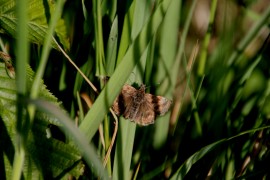
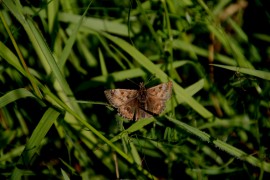
-8143339888.jpg)
-4377364427.jpg)
-4798586019.jpg)
-1608821200.jpg)
-6792915966.jpg)

-1588700469.jpg)
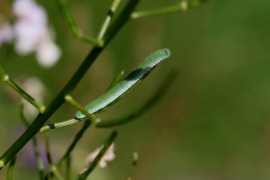
-4455794990.jpg)
-2282193973.jpg)
-8340696096.jpg)

-3047656165.jpg)
-9401881624.jpg)
-1916694384.jpg)
-3732446087.jpg)